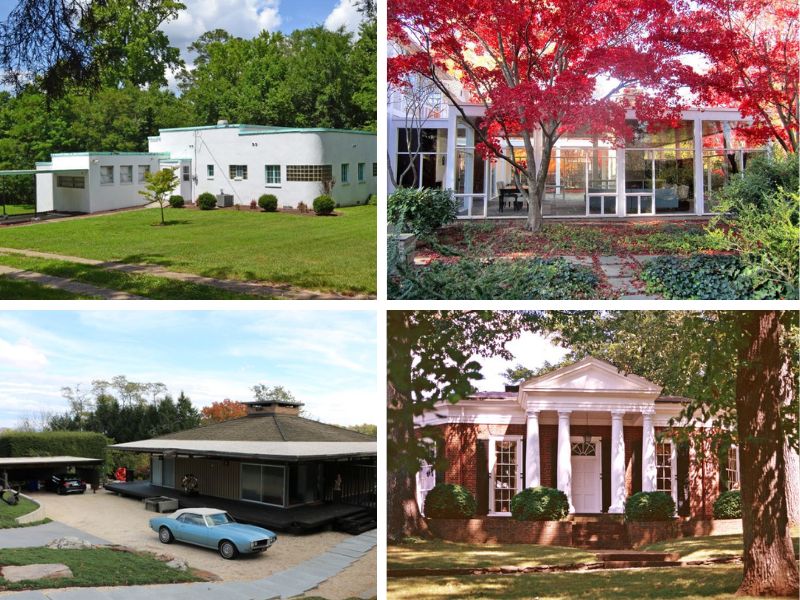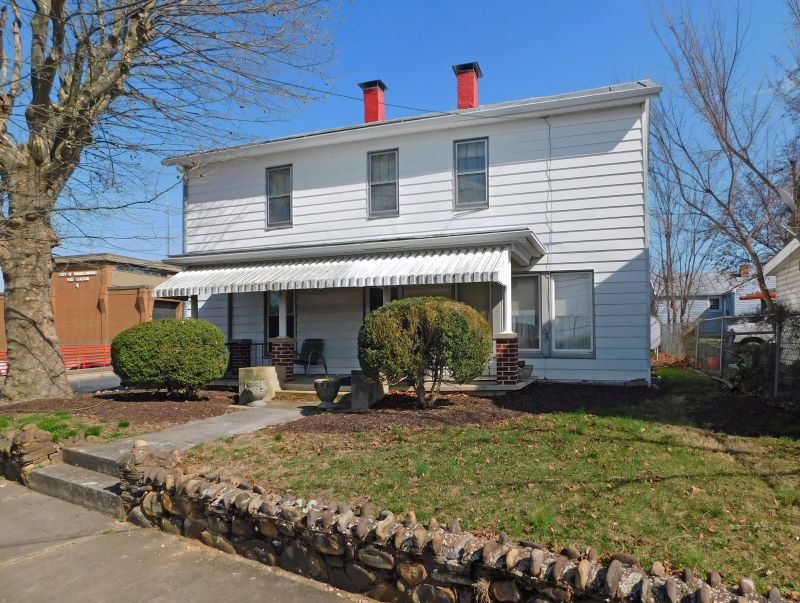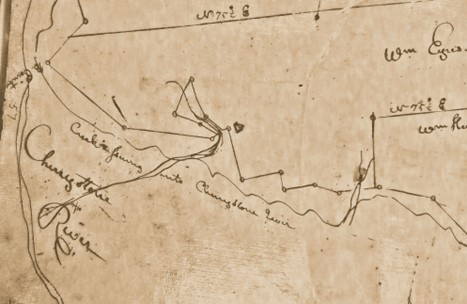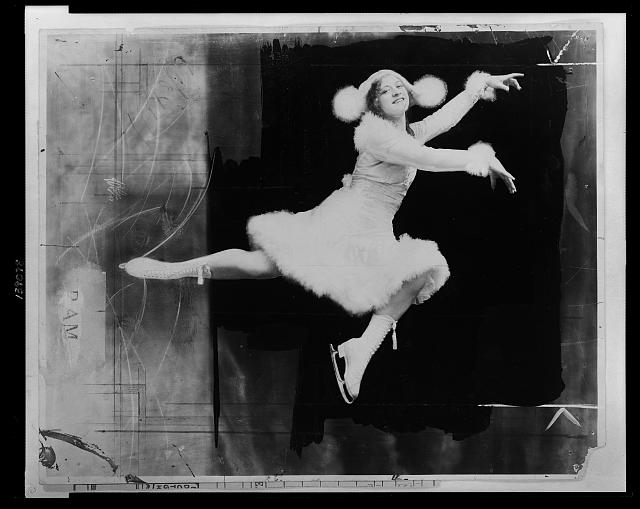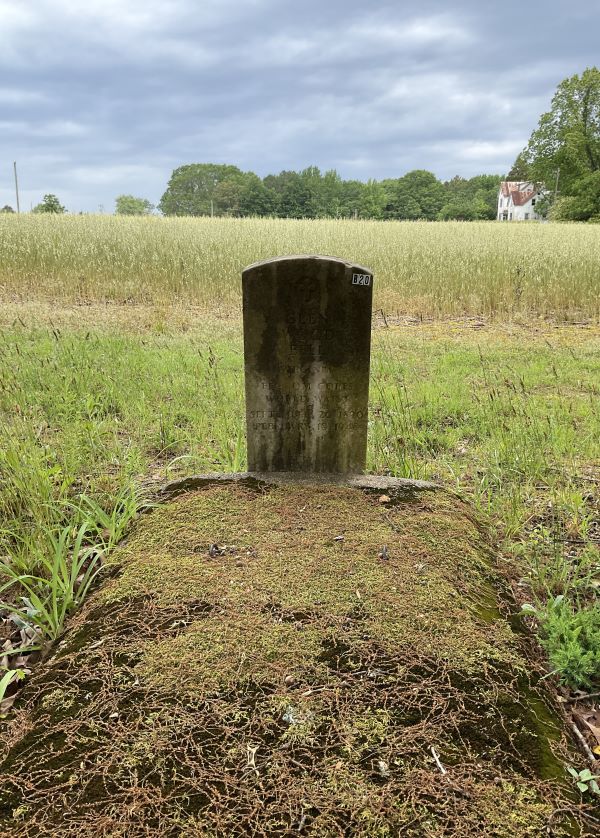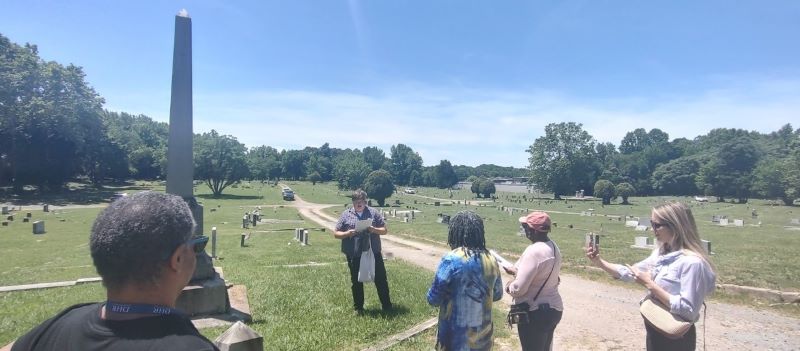Thirteen New State Historical Highway Markers Approved
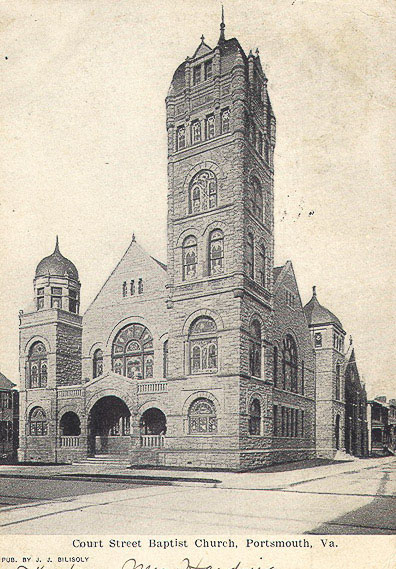
—New markers cover topics in the counties of Frederick, Gloucester, Henrico, Loudoun, and Spotsylvania; and the cities of Franklin, Hampton (2), Newport News, Portsmouth, Richmond, Suffolk, Virginia Beach—
[Each marker's text is reproduced below. Click on images to enlarge.]
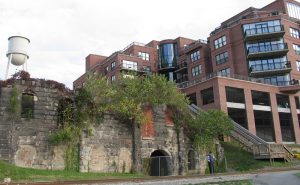
Topics covered in thirteen forthcoming historical markers include two “hidden figures” of the nation’s early space program, the life of singer and humanitarian Pearl Bailey, and an extensive one-time underground warehouse in Richmond that cooled kegs of beer in the era before refrigeration.
Markers for Dorothy Johnson Vaughan (1910-2008) and Mary Winston Jackson (1921-2005) will rise in Hampton to recall the lives of these two African American women who recently gained renown in book and film as “hidden figures” for their significant contributions to America’s early space program.
Vaughan, a mathematician, began working for the forerunner of NASA, NACA (the National Advisory Committee for Aeronautics) at its Langley-based facilities near Hampton during World War II. In 1949, Vaughan became NACA’s first African American supervisor, and excelled at the FORTRAN computer programming language. She “contributed to the Scout launch vehicle project, a crucial component of the space program, before retiring in 1971,” the future marker will read.
Jackson, who was born in Hampton and graduated from Hampton Institute, was hired by NACA in 1951 to be a “human computer” in a segregated computing unit at Langley Aeronautical Laboratory. “In 1958 she became NASA’s first African American female engineer,” the marker states. Jackson contributed to “Projects Mercury and Apollo,” and in her later decades worked to advance the careers of other female engineers and scientists.
Newport News will soon have a marker recognizing its native daughter, Pearl Bailey (1918-1990). Bailey began performing in nightclubs in the 1930s and appeared on Broadway, in movies, and on television during the course of her five-decade career. Her starring role in “Hello, Dolly!” earned her a special Tony award in 1968. She toured for many years with the USO entertaining American troops, and served as a U.S. representative to the General Assembly of the United Nations during the 1970s and 1980s. In 1988, Bailey was awarded the Presidential Medal of Freedom.
Henrico County will recall in a marker the five-story James River Brewery, “built in 1866 during a national boom in beer production.” Affiliated with D. G. Yuengling and Son of Pennsylvania, it had a popular beer garden, steam-powered equipment, and a large underground warehouse for storage and fermentation. “A fire in 1891 destroyed the main building, but the cellars survive,” the marker for placement near the structures will state.
Two markers relay Civil War history:
- In Virginia Beach, the valor of Sgt. Miles James (ca. 1829-ca. 1871) will be remembered. Born into slavery in Princess Anne County, James enlisted in the U.S. Army in 1863 and became a corporal in the 36thS. Colored Infantry. He was awarded a Medal of Honor for “extraordinary heroism” during combat at New Market Heights in Virginia in September 1864.
* - Loudoun County native son Confederate Lt. Col. Roger Preston Chew will be recalled. In November 1861, Chew helped organize, and became captain of, the Confederacy’s first horse artillery company. The unit became known as “Chew’s Battery” and participated in Maj. Gen. “Stonewall” Jackson’s Shenandoah Valley Campaign in 1862 and later joined J.E.B. Stuart’s cavalry command.
Five markers relay African American history in education, civil rights, and post-Civil War settlement:
- A City of Franklin marker will remember educator Della Irving Hayden (ca. 1855-1924). Born into slavery, Hayden graduated from what is today Hampton University in 1877 and served as a teacher and principal in Franklin. In 1904, she founded the Franklin Normal and Industrial Institute for African American students. The school later became Hayden High School and moved into a new brick building in 1953.
* - A Spotsylvania County sign will relay the history of the John J. Wright School, named for an African American educator who led efforts to purchase land for a training school that opened in 1913. For decades it was the county’s only public high school for African Americans. After fire destroyed the building, it was rebuilt in 1952, and became a middle school in 1968, during desegregation. Today it is the John J. Wright Educational and Cultural Center.
- A forthcoming Gloucester County marker will focus on Irene Morgan, who boarded a segregated Greyhound bus in the county in July 1944. After driving about 25 miles, the driver ordered Morgan to give up her seat to white passengers. She refused, and was arrested and jailed in Saluda. A legal suit she pursued reached the U.S. Supreme Court, “which decided in Morgan v. Virginia (1946) that laws requiring the segregation of passengers in interstate transportation were unconstitutional.”
* - A marker for Richmond highlights Westwood Village, settled by formerly enslaved African Americans after the Civil War in what was then Henrico County. Westwood became a vibrant, self-sustaining community by the time Richmond annexed it in 1942, and later sought to demolish it for a park. The community successfully resisted those plans. In 1961 a Westwood student became the first African American to desegregate the city’s Westhampton Junior High and Thomas Jefferson High after a federal court case.
- The story of Oak Lawn Cemetery will be relayed in Suffolk. Established by African Americans in 1885, the cemetery now contains the graves of numerous prominent business, religious, educational, and political leaders in Nansemond County (present-day Suffolk), as well as Civil War-era United States Colored Troops, and veterans of other U.S. wars.
“The Stephens Family,” a marker slated for Frederick County, recalls European settlers in the Shenandoah Valley. Peter and Maria Stephens settled there around 1732, arriving with a group of immigrants led by Jost Hite to form the dispersed Opequon settlement. Their son, Lewis, laid out the town known today as Stephens City. Roughly a day’s wagon journey south of Winchester, the location of the town set “a precedent for similarly spaced developments along the Great Valley Road,” the marker instructs.
In Portsmouth the “Court Street Baptist Church” marker will inform passersby that the church, established in September 1789, “is the oldest Baptist church in Portsmouth and Norfolk and became the mother church of several other congregations.” The current Romanesque Revival building was completed in 1903.
All thirteen markers were approved June 20 during a quarterly meeting of the Virginia Board of Historic Resources, which is authorized to designate new historical markers. Typically, it can take upwards of three months or more before new markers are erected and dedicated by their sponsors. The manufacturing cost of each new highway marker is covered by its sponsor.
The Virginia highway marker program, which began in 1927 with installation of the first historical markers along U.S. 1, is considered the oldest such program in the nation. Currently there are more than 2,600 official state markers, most of which are maintained by the Virginia Department of Transportation, except in those localities outside of VDOT’s authority.
More information about the Historical Highway Marker Program is available on the website of the Department of Historic Resources at https://www.dhr.virginia.gov/highway-markers/.
[PLEASE NOTE: DHR markers are erected not to “honor” their subjects but rather to educate and inform the public about a person, place, or event of regional, state, or national importance. In this regard, markers are not memorials.]
Full Text of Markers:
(Please note that some texts may be slightly modified before the manufacture and installation of the signs. Also locations proposed for each sign must be approved in consultation with VDOT or public works in jurisdictions outside VDOT authority.)
Della Irving Hayden (ca. 1855-1924)
Della I. Hayden, educator, was born into slavery in North Carolina and moved to Virginia with her mother after the Civil War. She attended a Freedmen’s Bureau school and graduated from the Hampton Normal and Agricultural Institute (later Hampton University) in 1877. She then served as a teacher and principal in Franklin and, for more than a decade, was “lady principal” of what is now Virginia State University. In 1904 Hayden founded the Franklin Normal and Industrial Institute to provide academic, agricultural, and industrial training to African American students. The school, renamed Hayden High School in her honor, moved into a new brick building here in 1953.
Sponsor: Franklin City Public School Board and The Hayden Group
Locality: City of Franklin
Proposed Location: 580 Oak Street
Sponsor Contact: Jessica Grant, jgrant@fcpsva.org
John J. Wright School
Representatives from local African American churches organized the Spotsylvania Sunday School Union in 1905 to secure a secondary school for black children. The Union, led by educator John J. Wright, purchased 158.5 acres here in 1910 and later deeded 20 acres to the county. The Snell Training School, built by Alfred Fairchild, opened here in 1913 and was for decades the county’s only public high school for black students. Renamed for John J. Wright in 1940, it burned in 1941 and was rebuilt in 1952. The building became a middle school in 1968 after desegregation was completed. In 2008, after a major renovation, the building was designated the John J. Wright Educational and Cultural Center.
Sponsor: John J. Wright Museum
Locality: Spotsylvania County
Proposed Location: 7565 Courthouse Road, Spotsylvania
Sponsor Contact: Roger Braxton, rcbraxtonjr@aol.com
Oak Lawn Cemetery
Seven African American trustees acquired land here in 1885 and established Oak Lawn Cemetery. Community leaders interred here include John W. Richardson, president of the Phoenix Bank of Nansemond; Wiley H. Crocker, founder of the Tidewater Fair Association and Nansemond Development Corporation; William W. Gaines, Baptist minister and founder of the Nansemond Collegiate Institute; Fletcher Mae Howell, Baptist missionary; Dr. William T. Fuller, physician and banker; and William H. Walker, Tuskegee Airman. Also buried here are late-19th-century local politicians, United States Colored Troops, and veterans of World Wars I and II, Korea, and Vietnam.
Sponsor: Historic Oak Lawn Cemetery Foundation
Locality: Suffolk
Proposed Location: 449 Market Street
Sponsor Contact: Nadia K. Orton, hamptonroadsgenealogy@gmail.com
Pearl Bailey (1918-1990)
Pearl Bailey, singer, author, and humanitarian, was born in Newport News. Her family, including brother Willie “Bill” Bailey, a famous tap dancer, lived at 1204 and later at 1202 29th St. For five decades, beginning in the 1930s, she performed in nightclubs, on Broadway, in movies, and on television, captivating audiences with her distinctive voice and humorous asides. Bailey received a special Tony Award in 1968 for her starring role in Hello, Dolly! For many years she toured with the USO to entertain American troops. During the 1970s and 1980s, she served as a U.S. representative to the General Assembly of the United Nations. Bailey was awarded the Presidential Medal of Freedom in 1988.
Sponsor: Ingenuity Capital Holding, Inc.
Locality: Newport News
Proposed Location: corner of Chestnut Ave. and 29th St.
Sponsor Contact: Gaynell Drummond, beachbonsai222@gmail.com
Sgt. Miles James (ca. 1829-ca. 1871)
Miles James, born into slavery in Princess Anne County, made his way to Portsmouth and enlisted in the U.S. Army in Nov. 1863. He was mustered into service at Fort Monroe and soon became a corporal in the 36th U.S. Colored Infantry. James was awarded the Medal of Honor for extraordinary heroism in action at New Market Heights, VA, on 29 Sept. 1864. After a bullet shattered his arm, necessitating an immediate field amputation, he continued to fight and urged his men forward within 30 yards of the Confederate works. Promoted to sergeant, he returned to duty by April 1865. He served briefly in Texas before rejoining his family in Norfolk. James died ca. 1871 of complications from his wound.
Sponsor: Ms. Jorja K. Jean
Locality: Virginia Beach
Proposed Location: Virginia Beach Courthouse Village
Sponsor Contact: Jorja Jean, Jorja.jean1954@gmail.com
The Irene Morgan Story Begins
On this site stood the Hayes Store Post Office, where Irene Morgan boarded a Greyhound bus on 16 July 1944. Morgan, an African American woman, was returning home to Baltimore, MD, after visiting her mother. About 25 miles north of here, the bus driver ordered her to give up her seat so that white passengers could sit. Refusing to comply, she was arrested and jailed in Saluda, VA. Her case reached the U.S. Supreme Court, which decided in Morgan v. Virginia (1946) that laws requiring the segregation of passengers in interstate transportation were unconstitutional. Morgan took her stand 11 years before Rosa Parks in Montgomery, AL.
Sponsor: Friends of the Museum
Locality: Gloucester County
Proposed Location: 2425 Hayes Road, Hayes
Sponsor Contact: Dr. Dorothy C. Cooke, dccruiser@msn.com
Dorothy Johnson Vaughan (1910-2008)
Dorothy Vaughan, mathematician, graduated from Wilberforce University in Ohio and was a member of Alpha Kappa Alpha Sorority. During World War II she left her job as a teacher to work for the National Advisory Committee for Aeronautics (NACA), later NASA, at the Langley Memorial Aeronautical Laboratory near Hampton. She was assigned to the West Area Computing Unit, a group of African American women responsible for processing aeronautical research data. In 1949, Vaughan became NACA’s first African American supervisor. She excelled at the FORTRAN computer programming language and contributed to the Scout launch vehicle project, a crucial component of the space program, before retiring in 1971.
Sponsor: Gamma Upsilon Omega Chapter, Alpha Kappa Alpha Sorority, Inc.
Locality: Hampton
Proposed Location: 602 Settlers Landing Road (Hampton Carousel Park)
Sponsor Contact: Pamela Ponton, pponton@cox.net
Mary Winston Jackson (1921-2005)
Mary Jackson, aerospace engineer, was born in Hampton and graduated from Hampton Institute in 1942. The National Advisory Committee for Aeronautics (NACA), later NASA, hired her in 1951 to be a “human computer” in the segregated West Area Computing Unit at Langley Aeronautical Laboratory. In 1958 she became NASA’s first African American female engineer. Her research focused on airflow around aircraft, and she contributed to Projects Mercury and Apollo. Jackson later worked to advance the careers of other female engineers and scientists. She was a member of Alpha Kappa Alpha Sorority, a Girl Scout leader, and a volunteer in many civic organizations.
Sponsor: Gamma Upsilon Omega Chapter, Alpha Kappa Alpha Sorority, Inc.
Locality: Hampton
Proposed Location: 602 Settlers Landing Road (Hampton Carousel Park)
Sponsor Contact: Pamela Ponton, pponton@cox.net
The Westwood Community
Formerly enslaved African Americans established Westwood Village here after the Civil War. Residents built houses, a church, a school, and businesses, forming a vibrant, self-sustaining community with many social and cultural organizations. The City of Richmond annexed Westwood from Henrico County in 1942. In the mid-1940s, residents resisted several attempts by the city to demolish the community and replace it with a park. Residents also combated segregation in Richmond’s public schools. A student from Westwood became the first African American to attend Westhampton Junior High (in 1961) and Thomas Jefferson High (in 1962) after a federal court decision in Warden v. Richmond School Board.
Sponsor: Friends of Westwood Playground
Locality: Richmond City
Proposed Location: intersection of Dunbar Street, Willow Lawn Drive, and Patterson Avenue
Sponsor Contact: Tammy Rose, trosegwhs@yahoo.com
Lt. Col. Roger Preston Chew (1843-1921)
Preston Chew, Confederate artillery officer, was born here at Locust Grove. He moved to what is now West Virginia as a child and graduated from the Virginia Military Institute. In Nov. 1861 he helped organize, and became captain of, the Confederacy’s first horse artillery company. The unit, known as Chew’s Battery, participated in Maj. Gen. Thomas J. “Stonewall” Jackson’s Shenandoah Valley Campaign in 1862 and later joined the Stuart Horse Artillery Battalion, part of Maj. Gen. J.E.B. Stuart’s cavalry command. Chew became commander of the Stuart Horse Artillery early in 1865. A prominent businessman after the war, he served in the West Virginia House of Delegates from 1885 until 1890.
Sponsor: George Calomiris
Locality: Loudoun County
Proposed Location: 34298 Harry Byrd Highway
Sponsor Contact: George Calomiris, george@calomiris.com
Court Street Baptist Church
The Kehukee Association, composed of Baptist churches in southeastern Virginia and eastern North Carolina, established Court Street Baptist Church on 7 Sept. 1789. This is the oldest Baptist church in Portsmouth and Norfolk and became the mother church of several other congregations. Members acquired land here in 1799 and built their first sanctuary. African American members, about a third of the congregation in 1860, withdrew in 1865 and formed two new congregations. Reuben H. Hunt, one of the South’s most prominent architects early in the 20th century, designed the church’s present Romanesque Revival sanctuary, which was completed in 1903.
Sponsor: Court Street Baptist Church
Locality: Portsmouth
Proposed Location: 447 Court Street
Sponsor Contact: Wilbur Kersey, Sheila.Cuffee@courtstreetacademy.com
James River Steam Brewery
Nearby stood the James River Steam Brewery, built in 1866 during a national boom in beer production. The five-story facility contributed to Richmond’s post-Civil War industrial recovery, and its beer garden served as a community center. David G. Yuengling Jr., part-owner, was the oldest son of the founder of D. G. Yuengling and Son in Pennsylvania, now considered the nation’s oldest continuously operating brewery. The James River brewery featured steam-powered equipment and an extensive underground warehouse or "lager" for storage and fermentation. The business closed by 1879 in the aftermath of a national economic crisis. A fire in 1891 destroyed the main building, but the cellars survive.
Sponsor: Richmond Beeristoric, Inc.
Locality: Henrico County
Proposed Location: Route 5 at Old Hudson St.
Sponsor Contact: Eric Mink, Dignann@aol.com
Stephens Family
Peter and Maria Stephens, German immigrants, settled here with their children in 1732. They had come from Pennsylvania with a group led by Jost Hite to form the Opequon settlement, a set of dispersed homesteads in this region. Archaeology reveals that the Stephens house occupied a site that Native Americans had once inhabited. Peter and Maria’s son Lewis, land speculator, entrepreneur, and militia officer, laid out a town here, which the General Assembly established as Stephensburgh in 1758. The town, later known as Newtown and then as Stephens City, was about a day’s wagon journey south of Winchester, setting a precedent for similarly spaced developments along the Great Valley Road.
Sponsor: Stone House Foundation
Locality: Frederick County
Proposed Location: Stephens Run Street near intersection with Route 11
Sponsor Contact: Byron C. Smith, bcsmith@newtownhistorycenter.org

